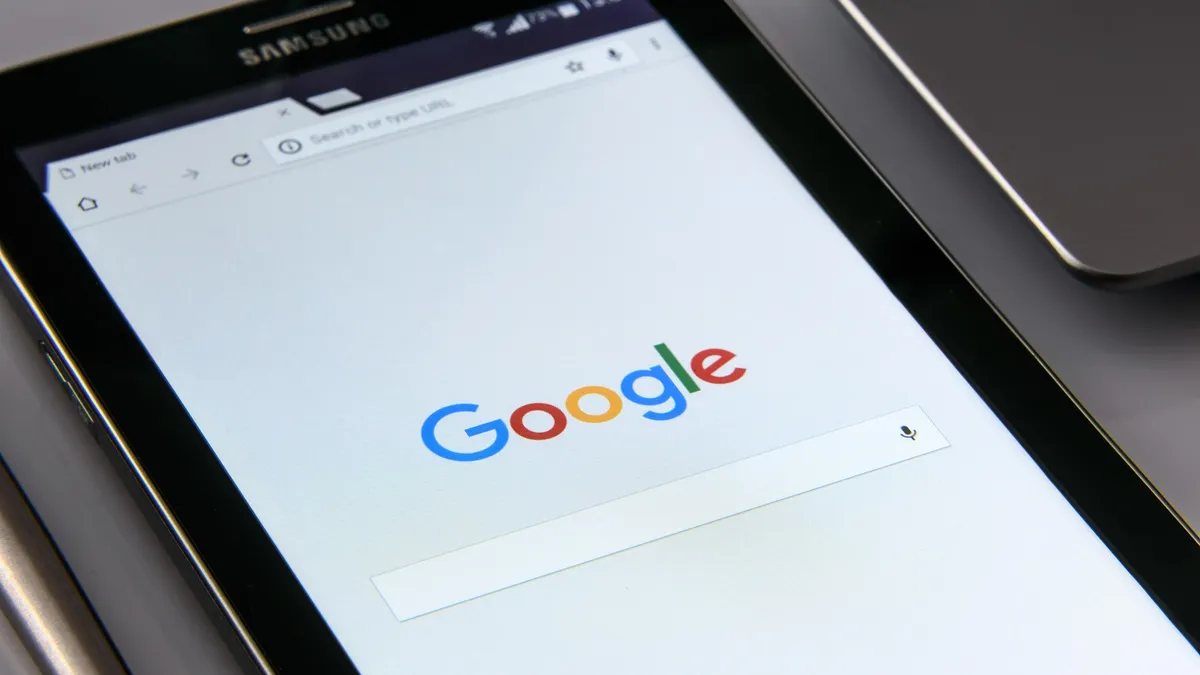Wal-Mart spent years in the e-commerce doldrums as Amazon steadily continued its retail incursion and rivals pivoted to meet the challenge. All that changed last summer when the retail giant changed course with its $3.3 billion acquisition of Amazon agitator Jet.com.
The payoff has been swift: In its most recent quarter, Wal-Mart’s e-commerce sales ballooned 63% with an attendant 69% rise in digital gross merchandise volume, as same-store sales increased 1.4% and traffic to stores rose 1.5%. But the new numbers that Wal-Mart is delivering in the digital space aren't just thanks to Jet or its widely heralded pricing algorithm. The brick-and-mortar stalwart, with Jet founder Marc Lore at the helm as its new U.S. e-commerce chief, has also been gobbling up pure-play specialty retailers at a rapid clip.
Shortly before Wal-Mart’s takeover, Jet picked up Nebraska-based furniture e-retailer Hayneedle, which is now in the Wal-Mart fold. And just after the holidays last year, Wal-Mart bought online shoe retailer Shoebuy, in a challenge to Amazon's Zappos, for $70 million.
Then in February, the company shelled out $51 million in cash for online outdoor retailer Moosejaw, and in March it ponied up another “$40 and $60 million” for vintage-inspired online women’s apparel Modcloth (possibly half the $80 million the startup had collected from investors).
Last month, reports began to surface that Wal-Mart is in discussions to acquire menswear site Bonobos, one of the few pure-play e-commerce sites reporting profits. (A Wal-Mart spokesperson declined to comment on the Bonobos rumor.) Around the same time, Wal-Mart paid $9 million for the web address alone of now-defunct Canadian online shoe retailer Shoes.com, just for the opportunity to redirect straggling customers to its Shoebuy site.
For a retailer that has staked its enduring success on the physical landscape, this pace has garnered kudos from many analysts. Moody’s Investors Service Lead Retail Analyst Charlie O’Shea called the post-Jet acquisitions “small, but tactically-important.” But they're also fraught with complexities, and there’s no way to know where Wal-Mart and its new digital sub-divisions are headed. Even O’Shea, in his email to Retail Dive regarding the purchase of Modcloth and Moosejaw, noted the moves are an attempt to close “what we still believe is an ultimately insurmountable gap with Amazon.”
"Retailers need someone to run the business and secure their assets, but they also that disrupter to agitate a bit and spark that renewal. That's the Marc Lore play at Wal-Mart,"

Greg Portell
Lead partner in the retail practice of A.T. Kearney
Lore's work there brings Wal-Mart the kind of balance retailers need in order to devise new strategies to meet today's challenges, Greg Portell, lead partner in the retail practice of global strategy and management consulting firm A.T. Kearney, told Retail Dive
"Retailers need someone to run the business and secure their assets, but they also need that disrupter to agitate a bit and spark that renewal. That's the Marc Lore play at Wal-Mart," Portell said. "Not everybody has that mandate or that kind of money, but that model illustrates [what I mean]. He has been turned loose, but doesn't have to worry about the stability."
But Wal-Mart may be endangering its core stability chasing digital sales that won't deliver much of a payoff, warns retail analyst Nick Egelanian, president of retail development consultants SiteWorks International. Egelanian isn’t all that impressed with Wal-Mart’s runaway e-commerce numbers because he sees them as a move up in a market that has high costs — a departure from Wal-Mart's foremost retail strategy — and that still represents less than 10% of all retail sales.
“They could be trying to create a more hip image and/or be looking to gain exclusive control of hip names in online and brick-and-mortar retailing, but for a company that could not adjust its model to profitably operate Wal-Mart Express ‘drugstore’ concepts, this seems like a considerable stretch,” he told Retail Dive in an email. “They got a 63% increase in internet sales by buying Jet and dropping shipping costs — a shell game not tied to profitability or sustainability.”
Targeting the new 'Wal-Mart' shopper
The new brands help the retailer improve the experience for existing customers and extend its reach to new customers, Ravi Jariwala, senior director of public relations at Wal-Mart.com, told Retail Dive.
Those new customers are in demographic groups that don't generally frequent Wal-Mart stores; the average Wal-Mart customer is less wealthy and quite a bit older than those typically shopping at Target and Amazon. The company has had difficulty in the past moving beyond that core base.
“To move Wal-Mart upmarket is a Herculean task,” Doug Stephens, author of “Reengineering Retail: The Future of Selling in a Post-Digital World,” told Retail Dive. “Any time they do, they risk losing their most loyal customers. They’ve wound themselves in a corner by virtue of just how strong their brand essence is in the market. When you say ‘Wal-Mart,’ it brings up such clear connotations. For some people it’s what they want, and for some they want nothing to do with it. Buying Jet.com is an attempt to break free from Wal-Mart’s customer base.”
The acquisitions that have followed are walking the same line, analysts say. “Wal-Mart’s purchase of Jet.com, and the following acquisitions of Shoebuy, Moosejaw and Modcloth, demonstrate a path to cater to a wider audience, yet offer a more personalized experience through unique brands,” Tushar Patel, CMO of omnichannel solutions platform Kibo, told Retail Dive. “This is new territory for Wal-Mart, who previously built a reputation with consumers of being the ultimate megastore, where they could find commodity items at the lowest prices — but not necessarily a place where they could find a unique and highly curated shopping experience.”
The territory isn't entirely new, however. Nearly a decade ago, the retailer launched “Project Impact,” an effort to improve the quality of its apparel and home furnishings, clean up stores and present friendlier customer service. It was widely seen as a disaster. Before that, in 2005, Wal-Mart placed ads in Vogue magazine and sponsored a New York City fashion show to highlight new, higher-priced apparel lines. The result was another disaster — and another retreat.
"When you say ‘Wal-Mart,’ it brings up such clear connotations. For some people it’s what they want, and for some they want nothing to do with it."

Doug Stephens
Author of “Reengineering Retail: The Future of Selling in a Post-Digital World”
Those initiatives ended badly in part because Wal-Mart was unwilling to allow them sufficient time to reach their potential, illustrating the intractability of the Wal-Mart brand, its loyal fan base and even its massive staff, according to Mark Cohen, professor and director of Retail Studies at Columbia Business School. “You’re talking about the changing of the tide, and not just from the product development point of view. … It takes two to five years to change the composition of a large store and a large number of stores without losing your core customers and your underlying business,” he told Retail Dive last year about the Jet purchase. “I’ve seen these kinds of initiatives come and go at Wal-Mart, and I have never seen them stick.”
Still, these acquisitions do provide Wal-Mart with a different kind of customer, as well as with the talent and technology that reside at those companies, Keith Anderson, VP of strategy and insights at retail intelligence firm Profitero, told Retail Dive. “They have access to brands, buying teams … they have merchants and software engineers that might not move to Bentonville or Silicon Valley,” he said. “It probably has as much to do with creating a safe landing for companies that didn’t have a path forward as independent entities, but had a nice search authority.”
Indeed, the new e-commerce outlets have helped vastly expand Wal-Mart's online assortment, which rose from 10 million to 50 million in about a year, Jariwala said. "We’ve continued to enhance and build out our product assortment, not just in grocery and consumables, but in all of our categories that we offer online," he said.
"The acquisitions play a key part here — if you think about a company like Shoebuy, there’s over a million different SKUs that they bring to the table. Moosejaw has 400,000 different products that are part of their catalog. At the same time, they also help us really build out our expertise for these specialty categories. The expertise that these merchants and retailers bring in, the content, the way they think about content, curating and showcasing that product, are really important for their specialty categories, and that’s expertise that we’re ingesting back into our business."
Shoebuy CEO Mike Sorabella, for example, now heads up footwear for all of Wal-Mart's e-commerce, including Jet.com and Wal-Mart.com, while Moosejaw CEO Eoin Comerford similarly runs the company's outdoor e-commerce vertical. That means that brands that may want to sell through Wal-Mart have enhanced opportunities too, with options to sell through one site or another (or more), Jariwala said. "That helps up-level the experience for our existing customers and also helps us reach new customers," he said.
There’s another key difference this time around, too, Anderson says, which could make this go around more successful: The new brands aren't taking Wal-Mart's name.
They “appeal to more affluent, particularly younger households that don’t go to Wal-Mart or just visit occasionally,” Anderson told Retail Dive. “They’ve experimented with ways to attract and retain those customers, but historically that’s been under the banner of ‘Wal-Mart.’”
Keeping a distance to go the distance
When a giant company like Wal-Mart comes calling with a load of money, there’s definitely an upside, not least the often elusive opportunity to scale. “A company like Wal-Mart has a lot of excess cash, and a lot of mid-tier pure-play online retailers not profitable or are only marginally profitable,” Anderson said.
But it’s not just about the cash. "[The brands' loyal customers] love Moosejaw, they love Shoebuy, they love Modcloth, and they’re continuing to purchase that way," Jariwala said. "Through the acquisition and our scale, by leveraging cost of goods, by leveraging some of our transportation efficiencies and our shipping rates, we can apply those toward these newly acquired businesses and help them continue to grow, and at the same time we bring in their expertise."
Kibo's Patel sees it as a big, multi-faceted advantage for the smaller companies. “For the brands themselves, this creates an opportunity to leverage Wal-Mart’s world class fulfillment and operations,” Patel said. “Expect to see more omnichannel experiences from those branded sites, such as in-store pick or ship from store – furthering their consumer experience strategies.”
Jariwala, however, made clear that the brands will continue as standalone sites, and executives from those companies have sought to ensure loyal customers that little will change. It's not likely to, Kelly-Jo Sands, EVP of marketing technology at marketing firm Ansira, told Retail Dive.
“If you tie [Wal-Mart and Modcloth] too closely together, you might see a fanatic backlash, but you might also see expectations of the prices to come down."

Kelly-Jo Sands
EVP of marketing technology at Ansira
“Otherwise, Wal-Mart will alienate some of the following of the Modcloth customers who are so passionate,” she said. “If you tie those two names too closely together, you might see a fanatic backlash, but you might also see expectations of the prices to come down. From the consumer perspective, if I hear ‘Wal-Mart’ I’m expecting a dress to cost a whole lot less than $90. Their price point would have to come down, the way Target’s designer collections are higher than their normal brands, but not even as high as what Modcloth is getting.”
Such twists complicate matters, and could work against Wal-Mart’s wider aims. Pricing is a retail fundamental, but for a company that has long played hardball with suppliers and vanquished rivals in every price war, it's a bedrock. Some analysts remain skeptical. Research from business intelligence firm L2, for example, suggests that Wal-Mart’s Modcloth acquisition specifically “is unlikely to pay off.”
“Even Amazon has struggled with fashion, and given that Wal-Mart consumers are typically less affluent, the fashion goods seller might not be the best fit for the retailer’s demographics — meaning that Jet will also be unable to help ModCloth scale,” according to L2’s Elisabeth Rosen. “While ModCloth’s price point is certainly less premium than the high fashion brands that Amazon has targeted for partnerships, with most dresses hovering around $70, the prices are not necessarily low enough to be in the range of affordability for Wal-Mart customers.”
Hence the border fence between brands. But it's onerous to keep a meaningful divide between brands and operations, and that could prove especially challenging for uber-efficient Wal-Mart, Anderson said. “From a retailing and manufacturing point of view, it’s very hard to operate efficiently under many banners,” he said. “Everybody goes to one type of store — everybody buys the same item in each category. As time goes on, it is less and less sustainable to support parallel domains, platforms, buying, marketing. This whole industry is built around choice — all of that creates complexity and inefficiency.”
The new brands are unlikely to take part in some of Lore's e-commerce solutions. To combat high last-mile delivery costs, for example, Wal-Mart now provides discounts on items bought online but picked up store. While it's very likely that many Modcloth or Moosejaw customers live near a Wal-Mart store, however, offering that to them invites the branding and pricing conundrums described by Sands and Rosen.
For Wal-Mart, the buying spree that began with Jet is ostensibly to boost its e-commerce sales, find a new growth trajectory, give Amazon a real fight and reach a fresh set of consumers. But the veer from brick and mortar, the brand alteration and the pricing departure raises existential questions for the retail giant, which for more than half a century has fulfilled founder Sam Walton’s first-day “always low prices” promise by becoming the world's most streamlined distributor of goods. Existential questions can lead to existential freedom — or existential crisis.
While many analysts see Wal-Mart's bold push into e-commerce as a rational move in the quest for growth, others, like Egelanian, are less sanguine: "Nobody I speak to in the industry can come up with any logical reason for them to be buying those brands."




















